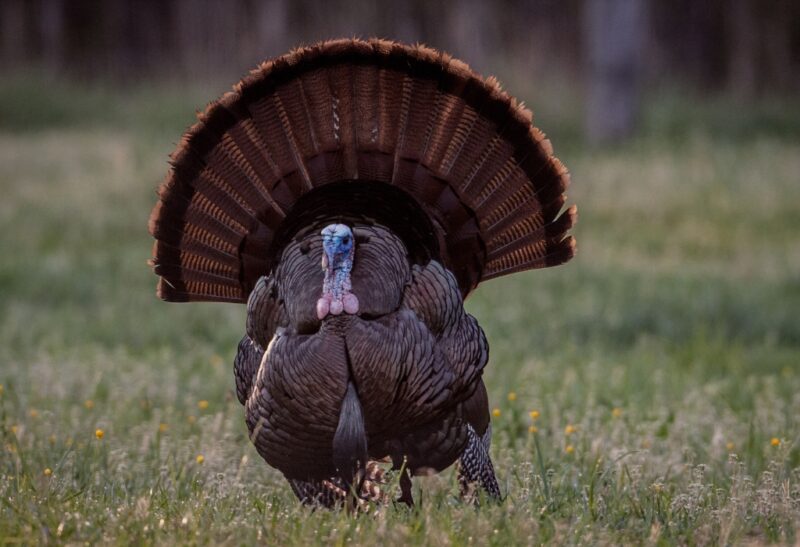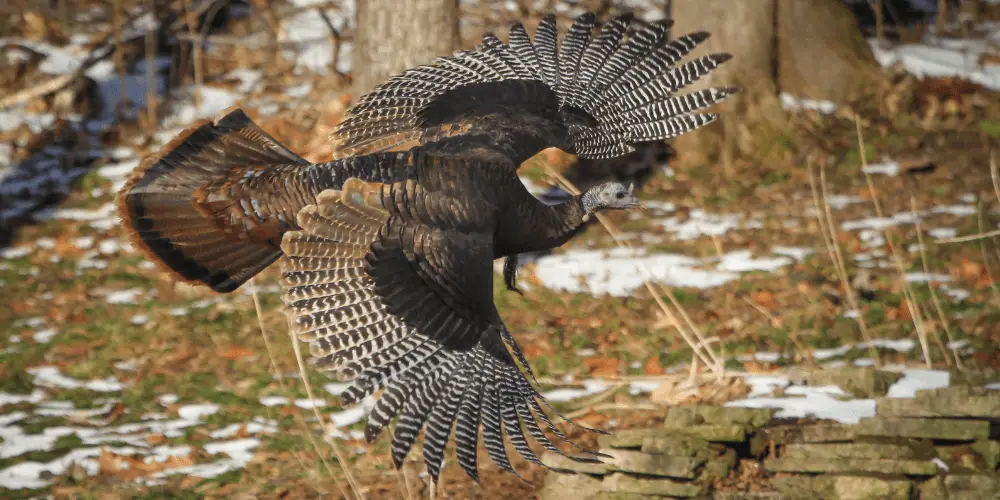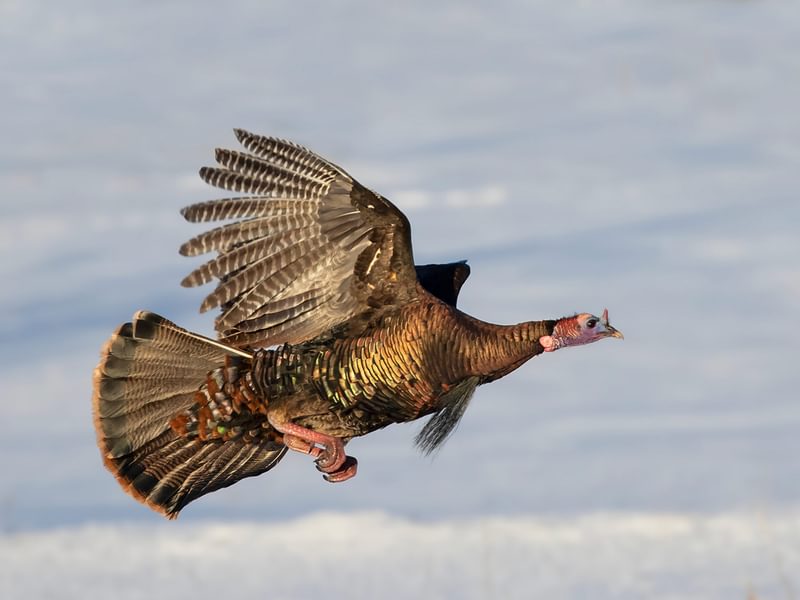Wild turkeys are often misunderstood creatures, with many people mistakenly believing they cannot fly. In reality, these birds possess impressive flying abilities that play a crucial role in their survival. Understanding their aerial capabilities sheds light on the incredible adaptability of this iconic species.
As we delve into the world of wild turkeys, you'll uncover the truth about their flying abilities and how they utilize this skill to thrive in diverse environments. By the end of this article, you'll gain a deeper appreciation for these remarkable birds and their unique characteristics.
Join us as we explore the fascinating world of wild turkeys, uncovering the secrets behind their flight and learning how they navigate their habitats with ease. Whether you're a wildlife enthusiast or simply curious about nature, this article will provide valuable insights into the life of wild turkeys.
- Discover Movierulz Your Ultimate Entertainment Hub Details Inside
- Subhashree Sahu Leaked Video Trending Controversy What You Need To Know
- Filmyfly Bollywood Movies Your Ultimate Destination For Entertainment
- Alyx Star Age Wiki The Ultimate Guide To Her Life Height And More
- Brooke Henderson Dating Career More Everything You Need To Know
Table of Contents
- Biological Overview of Wild Turkeys
- Can Wild Turkeys Fly? Understanding Their Flight Capabilities
- Anatomy of Wild Turkeys for Flight
- How Fast Can Wild Turkeys Fly?
- Why Do Wild Turkeys Fly?
- Common Myths and Facts About Wild Turkey Flight
- Comparison Between Wild and Domestic Turkeys
- Conservation Efforts for Wild Turkeys
- Interesting Facts About Wild Turkeys
- Conclusion: Appreciating the Agility of Wild Turkeys
Biological Overview of Wild Turkeys
Wild turkeys (Meleagris gallopavo) are native to North America and belong to the family Phasianidae. They are large, ground-dwelling birds known for their distinctive plumage and social behavior. Despite their size and weight, wild turkeys are incredibly agile and possess remarkable physical attributes that enable them to thrive in various ecosystems.
Their diet consists primarily of seeds, nuts, insects, and plant materials, which they forage for on the ground. Wild turkeys are highly adaptable and can be found in forests, grasslands, and even suburban areas. Understanding their biology is essential to appreciating their role in the ecosystem and their ability to fly.
Key characteristics of wild turkeys include:
- 1filmy4wapin Your Ultimate Destination For Bollywood Entertainment
- Sophie Rain Leaks The Truth Behind The Controversy Unveiled
- Breaking Tan Chuanjin Divorce Public Reaction Insights
- Vegamovies 3 Hindi Dubbed Filmyzilla Your Ultimate Guide To Streaming Bollywood Thrills
- Jackermans Mothers Warmth Chapter 3 A Deep Dive Into The Heartfelt Story
- Feathers with iridescent colors that shimmer in sunlight
- Strong legs for running and powerful wings for short bursts of flight
- Keen eyesight and hearing for detecting predators
Can Wild Turkeys Fly? Understanding Their Flight Capabilities
Debunking the Myth
One of the most common misconceptions about wild turkeys is that they cannot fly. In reality, wild turkeys are capable fliers, though their flight patterns differ from those of birds that spend most of their time in the air. Their ability to fly is crucial for survival, especially when escaping predators or reaching safe roosting spots.
Wild turkeys typically fly in short, powerful bursts, using their strong wing muscles to cover distances quickly. This method of flight allows them to navigate dense forests and open fields with ease.
Anatomy of Wild Turkeys for Flight
The anatomy of wild turkeys is specifically adapted for flight. Their large wingspan, typically ranging from 49 to 57 inches, provides the lift necessary for short bursts of flight. Additionally, their lightweight yet strong bones contribute to their flying ability.
Key anatomical features include:
- Powerful flight muscles that enable rapid takeoff
- Feathers designed for efficient airflow and stability
- Aerodynamic body shape that minimizes drag during flight
How Fast Can Wild Turkeys Fly?
Wild turkeys can achieve impressive speeds during flight, with some individuals reaching up to 55 miles per hour (88 kilometers per hour). While they cannot sustain these speeds for long distances, their bursts of speed are sufficient for evading predators and reaching safety.
Studies have shown that wild turkeys are among the fastest ground-dwelling birds when it comes to short-distance flight. Their ability to accelerate quickly makes them formidable escape artists in the wild.
Why Do Wild Turkeys Fly?
Escaping Predators
One of the primary reasons wild turkeys fly is to escape predators. By taking to the air, they can quickly distance themselves from threats such as coyotes, foxes, and birds of prey. Their agility and speed in flight make them difficult targets for predators.
Roosting in Trees
Wild turkeys also use flight to reach roosting spots in trees. Sleeping in elevated positions provides them with safety from ground-based predators and allows them to survey their surroundings for potential dangers.
Common Myths and Facts About Wild Turkey Flight
There are several myths surrounding wild turkey flight, many of which stem from misunderstandings about their behavior and capabilities. Below are some common myths and the corresponding facts:
- Myth: Wild turkeys cannot fly.
Fact: Wild turkeys are capable fliers and use their wings to escape danger and access safe roosting spots. - Myth: Wild turkeys only run and cannot take to the air.
Fact: While wild turkeys are excellent runners, they also rely on flight for short bursts of speed and elevation.
Comparison Between Wild and Domestic Turkeys
Unlike their wild counterparts, domestic turkeys (Meleagris gallopavo domesticus) have been selectively bred for their size and meat production, resulting in a loss of flight capabilities. Domestic turkeys are heavier and lack the strong wing muscles necessary for flight. This distinction highlights the importance of preserving the natural attributes of wild turkeys.
Key differences between wild and domestic turkeys include:
- Flight ability: Wild turkeys can fly, while domestic turkeys cannot
- Size and weight: Domestic turkeys are significantly larger and heavier
- Behavior: Wild turkeys are more active and alert, while domestic turkeys are less agile
Conservation Efforts for Wild Turkeys
Wild turkey populations have faced challenges over the years, including habitat loss and overhunting. However, conservation efforts have helped restore their numbers in many regions. Organizations such as the National Wild Turkey Federation (NWTF) work tirelessly to protect and enhance turkey habitats, ensuring the survival of these magnificent birds.
Key conservation strategies include:
- Habitat restoration and management
- Regulated hunting practices
- Public education and awareness campaigns
Interesting Facts About Wild Turkeys
Wild turkeys are fascinating creatures with many unique traits. Below are some interesting facts about these birds:
- Male wild turkeys, known as toms, display vibrant plumage during mating season to attract females.
- Wild turkeys have excellent vision, capable of detecting movement from great distances.
- They communicate through a variety of vocalizations, including gobbling, clucking, and purring.
Conclusion: Appreciating the Agility of Wild Turkeys
Wild turkeys are remarkable birds with impressive flying abilities that contribute to their survival in the wild. By understanding their biology, anatomy, and behavior, we can appreciate the complexity of these creatures and their role in the ecosystem. Conservation efforts are vital to ensuring the continued existence of wild turkeys and preserving their natural habitats.
We invite you to share your thoughts and experiences with wild turkeys in the comments below. If you enjoyed this article, consider exploring other wildlife topics on our site and spreading the word about the incredible world of wild turkeys. Together, we can promote awareness and appreciation for these magnificent birds.
Data and references for this article were sourced from reputable organizations such as the National Wild Turkey Federation, Cornell Lab of Ornithology, and the U.S. Fish and Wildlife Service.
Related Resources:
- Unveiling Mothers Warmth Chapter 3 By Jackerman Explore Now
- Discover Movierulz Your Ultimate Entertainment Hub Details Inside
- Noodlemagazine Your Ultimate Guide To Noodles Ndash Discover More Now
- A Deep Dive Into The Math Why X X X X Is Equal To 4x Graph And Its Reallife Applications
- Discover Exclusive 18 Hollywood Movies At Vegamovies



Detail Author:
- Name : Isaac Fisher
- Username : manderson
- Email : kovacek.kamryn@cole.com
- Birthdate : 1976-02-19
- Address : 67438 Bernita Divide Apt. 192 North Oceane, MI 74979
- Phone : +1.908.328.9304
- Company : Franecki-Marquardt
- Job : Eligibility Interviewer
- Bio : Aspernatur ut enim voluptatem quae non. Aut et occaecati sit commodi ab sed. Id quod quis recusandae laboriosam explicabo.
Socials
linkedin:
- url : https://linkedin.com/in/lorenzo5884
- username : lorenzo5884
- bio : Occaecati excepturi veniam aut ut sed.
- followers : 5993
- following : 2898
instagram:
- url : https://instagram.com/kunzel
- username : kunzel
- bio : Qui vel omnis consequatur. Odio aliquid fugiat nemo saepe. Ipsa unde facere sequi ut.
- followers : 6539
- following : 2679
facebook:
- url : https://facebook.com/lorenzo_kunze
- username : lorenzo_kunze
- bio : Neque accusamus ut maxime nam eligendi aliquam.
- followers : 3897
- following : 1829
twitter:
- url : https://twitter.com/lorenzo_id
- username : lorenzo_id
- bio : Non molestias ut qui. Saepe itaque qui consequatur optio tempora rerum deleniti. Ab sed quas aut et.
- followers : 5424
- following : 1649
tiktok:
- url : https://tiktok.com/@kunze1988
- username : kunze1988
- bio : Enim explicabo sit numquam. Provident est nulla aut.
- followers : 4303
- following : 482